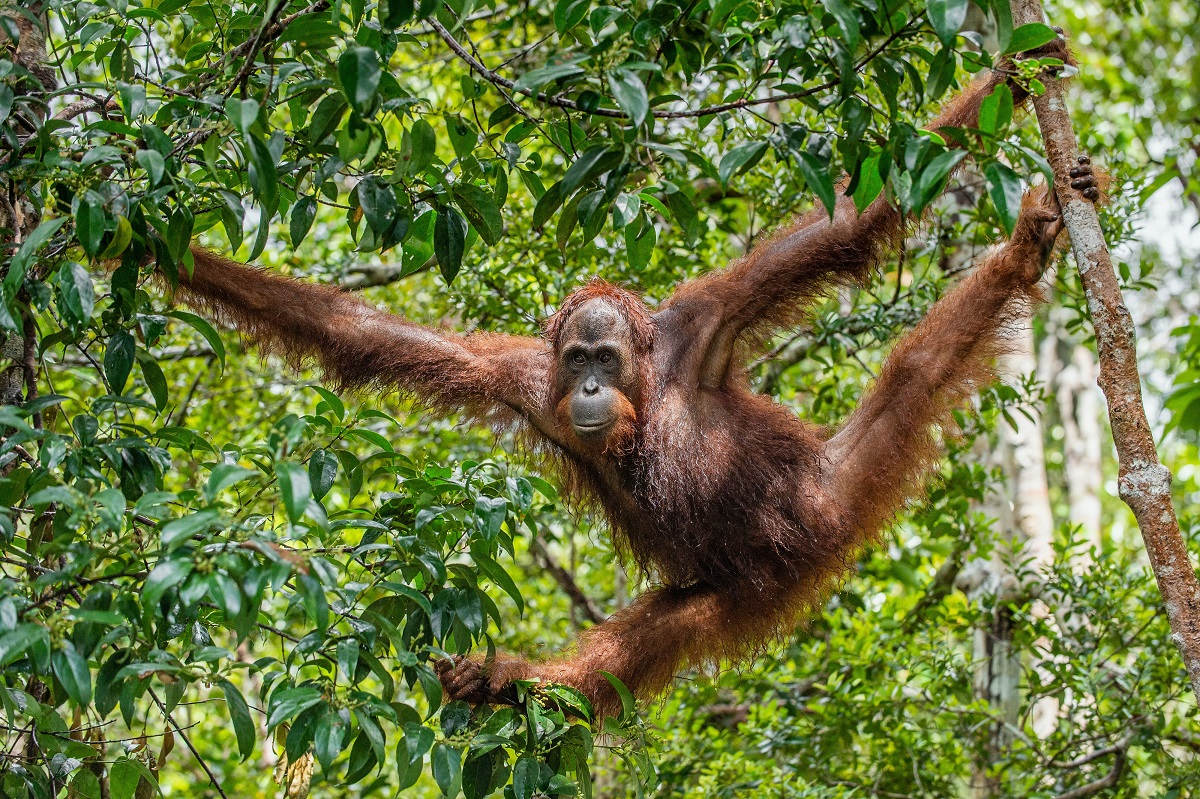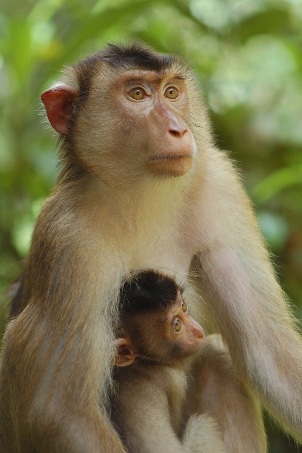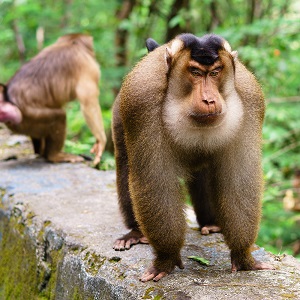August 18, 2023
On August 19th, we celebrate International Orangutan Day. It’s the perfect occasion to honour these magnificent apes and to delve into what distinguishes them from monkeys and other primates. Ready for a journey? Accompany us through the lush Indonesian jungles, as we seek out the enchanting ginger giants and their playful monkey counterparts.
King of the swingers
Orangutans and monkeys belong to the primate family, a group that also counts us among its members. Primates are recognized for their advanced cognitive abilities, dexterous hands and feet, and forward-facing eyes. These traits equip them with curiosity and adaptability, making them some of the most thriving creatures ever to grace our planet.
Monkeys and apes (like orangutans) are from the same family tree, though they branched off in different directions many millions of years ago. They may have taken different paths, but our forest cousins still have a lot in common with each other, and with us. To find out more about the differences between apes and monkeys, read this article.
Similarities and differences
Due to their common ancestry, orangutans and monkeys have many similarities. Like all primates, they have opposable thumbs that help them hold and inspect objects, or even use some rudimentary tools. Both have fingernails instead of claws and hair instead of fur. In terms of their diet, both are omnivores, with a wide and varied diet that includes everything from fruit to insects and eggs.
One of the most obvious differences is their size. Monkeys are a lot smaller than orangutans, which can weigh in at up to 200 pounds! Even the biggest species of monkeys – the mandrills (Mandrillus sphinx) – only grow to a maximum weight of 119 pounds. Another key difference is tails – monkeys have them, while orangutans don’t. And let’s not forget that beautiful ginger fur – a feature that’s unique to orangutans.
Getting around
One of the key differences that sets orangutans and monkeys apart is the way they move. As apes, orangutan tend to swing leisurely below the branches, while the more nimble monkeys will scamper along the top. Some have prehensile tails that help them navigate the treetops with amazing acrobatic skill.

Both groups are arboreal, which means they spend most of their time in forests. Occasionally, when they come down from the trees, their behavior reveals another key difference: Monkeys use the whole sole of their foot when they walk, with their palms up, whereas orangutans close their fists or extend their palms flat.
Getting a good night’s sleep
After a long day of foraging in the forest, both monkeys and orangutans are ready for a good rest. And their sleeping habits are another point of difference. Orangutans build themselves a nest in the treetops every night, folding over leaves and branches to make a mattress for themselves. They sometimes even add a roof when it rains.
Monkeys, on the other hand, sleep on bare branches or rocky outcrops in places where they feel safe. More often than not, this means tall, isolated trees that predators would find hard to reach, or cliff faces that are inaccessible to all but the most capable of climbers. Some monkeys even make their camp near human settlements, so they can be close to food.
Social climbers: Living in groups or living alone
Given their size, their security, and the amount of food they need, orangutans and monkeys have very different social habits. Orangutans, and particularly the males, are mostly solitary. The females will travel around with their babies for the first eight years of their lives, teaching them where and how to find food in the forest.

At the other end of the social spectrum, monkeys are gregarious creatures that usually live together in a troop. These communities can grow very large indeed, with some urban populations more than a hundred strong! Just like their human neighbors, these large social groups have their fair share of drama, with conflict always just around the corner.
In Restorasi Ekosistem Riau (RER), there’s one species of monkey call the southern pig-tailed macaque, which moves around in large family groups that are governed by a complex social hierarchy. Every day, these animals can be seen communicating with each other using a complex language of gestures that includes lip puckering, eyebrow raises, and grooming.
RER conservation efforts to protect species and biodiversity
Five species of primates have been identified so far on the Kampar Peninsula, one of which is an Endangered ape: the agile gibbon. It has fur that varies in colour from black to reddish brown; interestingly, agile gibbons on the Kampar Peninsula have darker fur compared to similar species in South Sumatra. Like the orangutan in neighboring Sumatra, this arboreal animal is considered Endangered (EN) due to habitat loss and poaching.

In addition to the agile gibbon, RER is home to four species of monkeys: the east Sumatran banded langur, long-tailed macaque, silvered langur, and the southern pig-tailed macaque. The latter is listed as Endangered (EN) by the International Union for Conservation of Nature (IUCN).
RER is home to more than 800 species of plants and wildlife, making it a vital refuge for Indonesia’s most endangered animals. Through a combination of wildlife monitoring, surveys, and replanting programs, we are working to ensure the jungles of Riau stay healthy, so they can go on providing for the many diverse and amazing members of our own family tree.